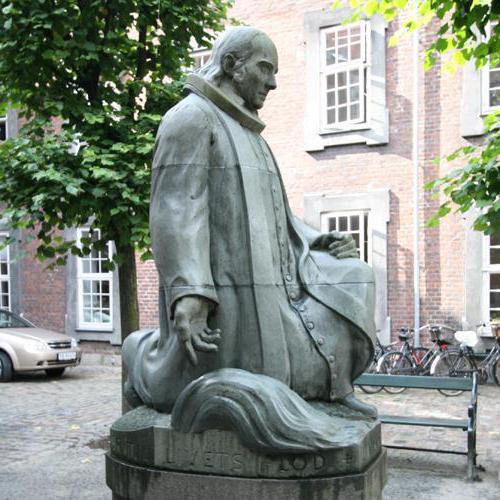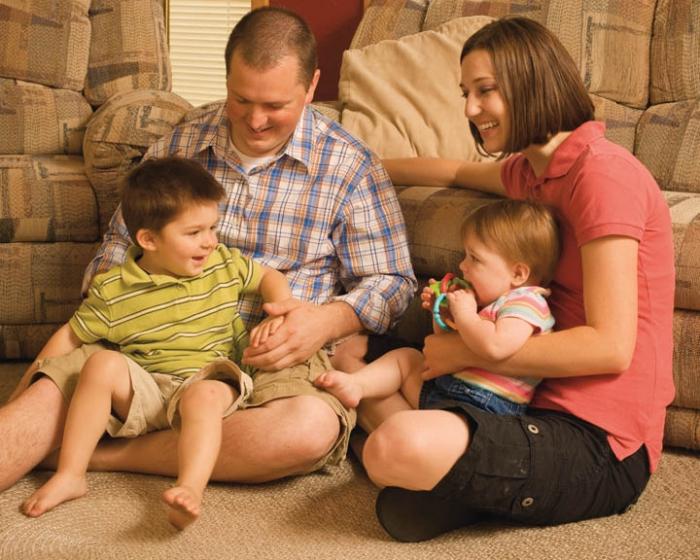In the capital of Denmark, many unique structures,of interest to tourists. One of them is a Lutheran church, built in honor of the priest and philosopher Nikolai Grundtvig and named after him. The grand church of Grundtvig is located in one of the sparsely populated areas of the city. It is regularly visited by pilgrims from around the world.
Nikolai Grundtvig - the famous Danish theologian
Outstanding enlightener, philosopher and publicfigure Nikolay Frederic Severin Grundtvig played a large role in the history of Denmark. He was born in 1783, graduated from the University of Copenhagen, devoted his life to educational work. With his assistance, Folk universities opened in Denmark. Thanks to these institutions, the poorest segment of the population has an opportunity to get an education.

Nikolai Grundtvig was engaged not onlyeducational work. He wrote books and scientific treatises, created more than one and a half thousand church hymns, as well as religious sermons. Many hymns are still sung in the Lutheran churches of Denmark. The theologian Grundtvig about 10 years was a member of the Parliament of the country, and in 1861 he was awarded the title of Honorary Bishop of the Lutheran Church of Denmark.
Church construction history
To pay homage to a famous person,The grateful people of Denmark decided to erect a monument and build the Grundtvig Church in his honor. In 1913, a competition for the best temple project was held in the country. The winner was the architect Peder Wilhelm Jensen Klint. His project was different from the religious buildings built in those years. There were not enough funds for construction, but the project of the temple was very popular with the people of Denmark, and then the country announced a collection of money among the population.
For the construction of the temple was chosen unpopularpopulation area Bispebjerg on the outskirts of Copenhagen. In order to attract residents, it was decided to build inexpensive comfortable homes for workers near the cathedral. So the city tried to form a new residential area, the center of which was the church of Grundtvig. In September 1921 the builders laid the first stone in the foundation of the future cathedral. A yellow brick popular in Denmark was used for the construction of the church and houses. Residential buildings and the building of the temple constituted a single architectural ensemble.

Grundtvig Church in Copenhagen built in 5years old. In 1926, the central part of the temple complex was erected, and in 1927 the first service was held. Despite the fact that the church began to function, the interior work was not completed. In 1930, Jensen Klint died, and then his son, Kaare, took over the building. Only in 1940, the internal work was completed.
Grundtwig Cathedral - a synthesis of architectural styles
The church of Grundtwig is an expressionist style temple, although in its decoration elements of classical Gothic architecture can be traced. In general, it is similar to the medieval rural buildings in the Scandinavian version.
The height of the majestic western facade along withthe bell tower reaches 49 meters, strict concise forms resemble church organ. The length of the temple together with the porch and the choir is 76 meters, and the width is 35 meters. At the same time inside can be 1440 people.

6 million were spent on the construction of the church.bricks, some of them were carefully polished and used to finish the exterior walls. Sunlight reflects from them and gives the building a special splendor. High nave is decorated with stepped, ascending upward gables 22 m high.
The interior of the temple
Inside, the church of Grundtvig is as beautiful asoutside. Used for decoration yellow Danish brick handmade, which is packed tightly. All the interior is designed in strict Gothic style. The decoration are only high columns and arched vaults.
The room is divided into three parts.In the center is the main part - the "body" of the temple. Here is a chair built from the same brick as the whole building. Her design was designed by the son of Jensen Klint. Chairs for parishioners made from natural beech are installed in the nave. The project also included places in side galleries, but they are currently closed to the public.

Дизайн алтаря и двух оловянных подсвечников developed Kaare Klint. In his work, he used sketches of his father. There is also a crucifix made by the daughter of the architect. The font is carved out of limestone. It consists of 8 brass bowls. Each has biblical quotes.
The church of Grundtvig (Denmark) is famous for itsorgans. The small organ was built in 1940, and the large one was installed 25 years later. It is the longest organ in the Scandinavian Peninsula. He has 4 registers and 55 votes, the length of the pipes is 11 meters. The outlines of a large organ repeat the facade of the building. Periodically in the church are organ concerts.










